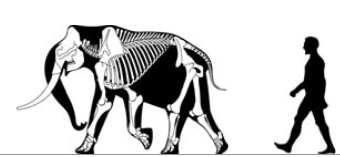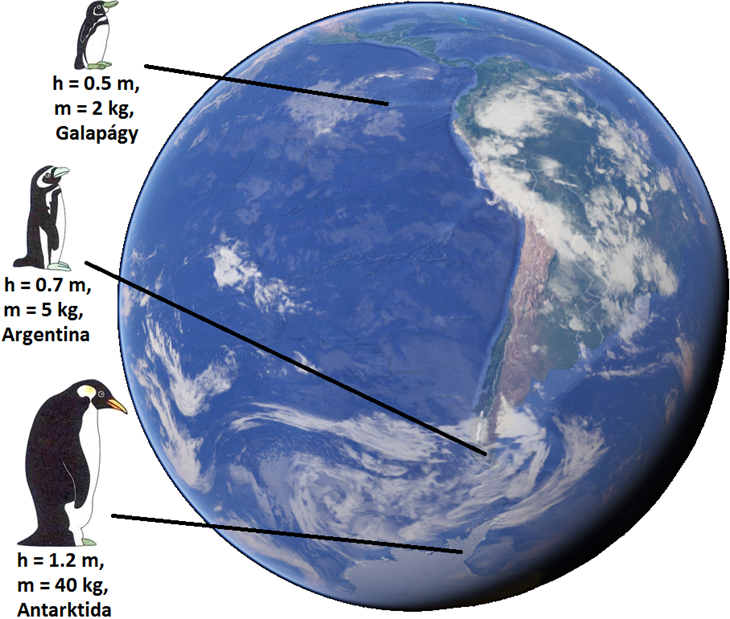|
Biological Rules
A biological rule or biological law is a generalized law, principle, or rule of thumb formulated to describe patterns observed in living organisms. Biological rules and laws are often developed as succinct, broadly applicable ways to explain complex phenomena or salient observations about the ecology and biogeographical distributions of plant and animal species around the world, though they have been proposed for or extended to all types of organisms. Many of these regularities of ecology and biogeography are named after the biologists who first described them. From the birth of their science, biologists have sought to explain apparent regularities in observational data. In his biology, Aristotle inferred rules governing differences between live-bearing tetrapods (in modern terms, terrestrial placental mammals). Among his rules were that brood size decreases with adult body mass, while lifespan increases with gestation period and with body mass, and fecundity decreases with lif ... [...More Info...] [...Related Items...] OR: [Wikipedia] [Google] [Baidu] |
Law (science)
Scientific laws or laws of science are statements, based on repeated experiments or observations, that describe or predict a range of natural phenomena. The term ''law'' has diverse usage in many cases (approximate, accurate, broad, or narrow) across all fields of natural science (physics, chemistry, astronomy, geoscience, biology). Laws are developed from data and can be further developed through mathematics; in all cases they are directly or indirectly based on empirical evidence. It is generally understood that they implicitly reflect, though they do not explicitly assert, causal relationships fundamental to reality, and are discovered rather than invented. Scientific laws summarize the results of experiments or observations, usually within a certain range of application. In general, the accuracy of a law does not change when a new theory of the relevant phenomenon is worked out, but rather the scope of the law's application, since the mathematics or statement representing ... [...More Info...] [...Related Items...] OR: [Wikipedia] [Google] [Baidu] |
Constantin Wilhelm Lambert Gloger
Constantin Wilhelm Lambert Gloger (17 September 1803 near Grottkau, Silesia, Kingdom of Prussia – 30 December 1863 in Berlin) was a German zoologist and ornithologist. Gloger was the first person to recognise the structural differences between swallows and swifts, and also the first to put up artificial bat boxes. He was the originator of what is now known as Gloger's rule Gloger's rule is an ecogeographical rule which states that within a species of endotherms, more heavily pigmented forms tend to be found in more humid environments, e.g. near the equator. It was named after the zoologist Constantin Wilhelm Lambe ..., which states that dark pigments increase in races of animals (birds were the examples in which he originally noticed the pattern) living in warm and humid habitats. He put forward this theory in his ''Das Abändern der Vögel durch Einfluss des Klimas'' (1833). The exact way this pattern is actually caused is still unclear, but in birds it has been suggest ... [...More Info...] [...Related Items...] OR: [Wikipedia] [Google] [Baidu] |
The American Naturalist
''The American Naturalist'' is the monthly peer-reviewed scientific journal of the American Society of Naturalists, whose purpose is "to advance and to diffuse knowledge of organic evolution and other broad biological principles so as to enhance the conceptual unification of the biological sciences." It was established in 1867 and is published by the University of Chicago Press. The journal covers research in ecology, evolutionary biology, population, and integrative biology. , the editor-in-chief is Daniel I. Bolnick. According to the ''Journal Citation Reports'', the journal had a 2020 impact factor of 3.926. History The journal was founded by Alpheus Hyatt, Edward S. Morse, Alpheus S. Packard Jr., and Frederick W. Putnam at the Essex Institute in Salem, Massachusetts. The first issue appeared in print dated March 1867."American Naturalist," in International Magazine Co., ''Periodicals,'' vol. 1, no. 1 (October-December 1917), pg. 5. In 1878 the journal was for sale and ... [...More Info...] [...Related Items...] OR: [Wikipedia] [Google] [Baidu] |
Journal Of Biogeography
The ''Journal of Biogeography'' is a peer-reviewed scientific journal in biogeography that was established in 1974. It covers aspects of spatial, ecological, and historical biogeography. The founding editor-in-chief was David Watts, followed by John Flenley, Philip Stott (1987-2004), Robert J. Whittaker (2004-2015), and Peter Linder ( University of Zurich; 2015-2019). The current editor-in-chief is Michael N Dawson (University of California, Merced). Abstracting and indexing The journal is abstracted and indexed in: According to the ''Journal Citation Reports'', the journal has a 2021 impact factor The impact factor (IF) or journal impact factor (JIF) of an academic journal is a scientometric index calculated by Clarivate that reflects the yearly mean number of citations of articles published in the last two years in a given journal, as ... of 4.810. References External links * {{DEFAULTSORT:Journal Of Biogeography Ecology journals English-language journal ... [...More Info...] [...Related Items...] OR: [Wikipedia] [Google] [Baidu] |
Carl Bergmann (anatomist)
Carl Georg Lucas Christian Bergmann (18 May 1814 – 30 April 1865) was a German anatomist, physiologist and biologist who developed Bergmann's rule relating population sizes to ambient temperature. at Who Named It Biography In 1838 Bergmann received his medical doctorate at the , and later on, served as ''Obermedicinalrath'' and as a professor of anatomy and physiology at the . He produced a series of papers between 1839 and 1862 on[...More Info...] [...Related Items...] OR: [Wikipedia] [Google] [Baidu] |
Clade
A clade (), also known as a monophyletic group or natural group, is a group of organisms that are monophyletic – that is, composed of a common ancestor and all its lineal descendants – on a phylogenetic tree. Rather than the English term, the equivalent Latin term ''cladus'' (plural ''cladi'') is often used in taxonomical literature. The common ancestor may be an individual, a population, or a species (extinct or extant). Clades are nested, one in another, as each branch in turn splits into smaller branches. These splits reflect evolutionary history as populations diverged and evolved independently. Clades are termed monophyletic (Greek: "one clan") groups. Over the last few decades, the cladistic approach has revolutionized biological classification and revealed surprising evolutionary relationships among organisms. Increasingly, taxonomists try to avoid naming taxa that are not clades; that is, taxa that are not monophyletic. Some of the relationships between org ... [...More Info...] [...Related Items...] OR: [Wikipedia] [Google] [Baidu] |
Bergmann's Rule
Bergmann's rule is an ecogeographical rule that states that within a broadly distributed taxonomic clade, populations and species of larger size are found in colder environments, while populations and species of smaller size are found in warmer regions. Bergmann's rule only describes the overall size of the animals, but does not include body parts like Allen's rule does. Although originally formulated in relation to species within a genus, it has often been recast in relation to populations within a species. It is also often cast in relation to latitude. It is possible that the rule also applies to some plants, such as ''Rapicactus''. The rule is named after nineteenth century German biologist Carl Bergmann, who described the pattern in 1847, although he was not the first to notice it. Bergmann's rule is most often applied to mammals and birds which are endotherms, but some researchers have also found evidence for the rule in studies of ectothermic species, such as the ant '' ... [...More Info...] [...Related Items...] OR: [Wikipedia] [Google] [Baidu] |
William Bateson
William Bateson (8 August 1861 – 8 February 1926) was an English biologist who was the first person to use the term genetics to describe the study of heredity, and the chief populariser of the ideas of Gregor Mendel following their rediscovery in 1900 by Hugo de Vries and Carl Correns. His 1894 book ''Materials for the Study of Variation'' was one of the earliest formulations of the new approach to genetics. Early life and education Bateson was born 1861 in Whitby on the Yorkshire coast, the son of William Henry Bateson, Master of St John's College, Cambridge. He was educated at Rugby School and at St John's College, where he graduated BA in 1883 with a first in natural sciences. Taking up embryology, he went to the United States to investigate the development of '' Balanoglossus'', a worm-like hemichordate which led to his interest in vertebrate origins. In 1883–4 he worked in the laboratory of William Keith Brooks, at the Chesapeake Zoölogical Laboratory in Hamp ... [...More Info...] [...Related Items...] OR: [Wikipedia] [Google] [Baidu] |
Joel Asaph Allen
Joel Asaph Allen (July 19, 1838 – August 29, 1921) was an American zoologist, mammalogist, and ornithologist. He became the first president of the American Ornithologists' Union, the first curator of birds and mammals at the American Museum of Natural History, and the first head of that museum's Department of Ornithology. He is remembered for Allen's rule, which states that the bodies of endotherms (warm-blooded animals) vary in shape with climate, having increased surface area in hot climates to lose heat, and minimized surface area in cold climates, to conserve heat. Early life Allen was born in Springfield, Massachusetts, the son of Joel Allen and Harriet Trumbull. He studied and collected specimen of natural history early in life, but he was forced to sell his relatively large collection so that he could attend the Wilbraham & Monson Academy in 1861. The following year, he transferred to Harvard University, where he studied under Louis Agassiz. Career as a field collecto ... [...More Info...] [...Related Items...] OR: [Wikipedia] [Google] [Baidu] |
Allen's Rule
Allen's rule is an ecogeographical rule formulated by Joel Asaph Allen in 1877, broadly stating that animals adapted to cold climates have thicker limbs and bodily appendages than animals adapted to warm climates. More specifically, it states that the body surface-area-to-volume ratio for homeothermic animals varies with the average temperature of the habitat to which they are adapted (i.e. the ratio is low in cold climates and high in hot climates). Explanation Allen's rule predicts that endothermic animals with the same body volume should have different surface areas that will either aid or impede their heat dissipation. Because animals living in cold climates need to conserve as much heat as possible, Allen's rule predicts that they should have evolved comparatively low surface area-to-volume ratios to minimize the surface area by which they dissipate heat, allowing them to retain more heat. For animals living in warm climates, Allen's rule predicts the opposite: that they s ... [...More Info...] [...Related Items...] OR: [Wikipedia] [Google] [Baidu] |
Bergmann's Rule
Bergmann's rule is an ecogeographical rule that states that within a broadly distributed taxonomic clade, populations and species of larger size are found in colder environments, while populations and species of smaller size are found in warmer regions. Bergmann's rule only describes the overall size of the animals, but does not include body parts like Allen's rule does. Although originally formulated in relation to species within a genus, it has often been recast in relation to populations within a species. It is also often cast in relation to latitude. It is possible that the rule also applies to some plants, such as ''Rapicactus''. The rule is named after nineteenth century German biologist Carl Bergmann, who described the pattern in 1847, although he was not the first to notice it. Bergmann's rule is most often applied to mammals and birds which are endotherms, but some researchers have also found evidence for the rule in studies of ectothermic species, such as the ant '' ... [...More Info...] [...Related Items...] OR: [Wikipedia] [Google] [Baidu] |





